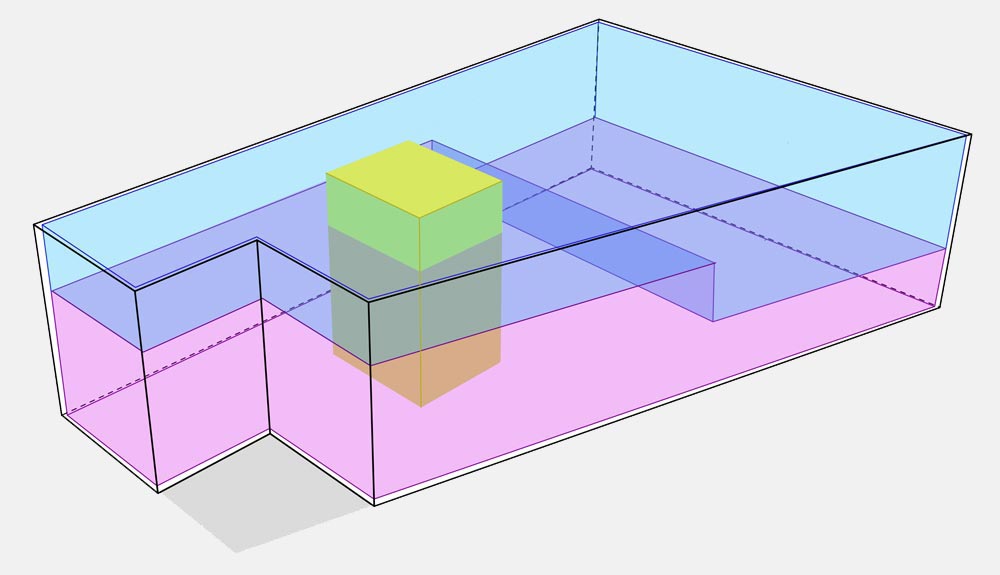How do a building’s circulation elements (such as entry and exit points, hallways, stairwells and elevator) determine the character of the spaces within?
Every building is defined by a unique navigational structure. The ways in which a building dictates the movement of people fundamentally informs one’s use and experience of the space.
In this post, we specifically explore how the placement of the elevator can be determined by the location of commercial space, which will then determine the layout of the hallways, and importantly, the main entrance. This condition exposes how each decision made carries with it consequences that impact the layout and experience of other areas of the building.
The current Remix proposal divides the second floor equally between commercial and residential uses. If the commercial block is located on the northern side, abutting the Westcott Theater, the residential units can sit on the southern end of the building, overlooking the patio. In this scenario, the residential units have access to the best sunlight in the building and a view of the patio space. However, having access to the public patio may not pose a great advantage, as the space may become noisy at night and could compromise the privacy of residents.
On the other hand, the second floor commercial spaces can be located to the south and the residential units on the north side. This layout compromises access to sunlight for the residential units, but also protects them from ongoing noise/activity from the public patio space. Additionally if the commercial space is on the southside, it creates a dynamic relationship between the commercial space and the patio. In this scenario the second floor commercial could directly access the patio via an exterior stair and balcony.
With each scenario, the elevator location should correspond to the commercial block to provide the public free and easy access to the second floor businesses without having to pass through the private residential spaces. So as we consider positioning the commercial space on the north or south half of the building, the elevator is moving with it.
Here we diagram these two possibilities and the shifting location of the elevator core. All three floors are depicted below, even though we are only discussing the bottom two floors. In both scenarios, the third floor remains strictly residential.

In addition to the elevator corresponding with the commercial spaces, its position should also correspond to the main entrance location. Since the main entrance should provide direct access to the elevator, their placements are interwoven. Thus, these internal arrangements need to be coordinated with our exterior facade studies to understand the impact that the different scenarios have on the experience of the building from the street. If the elevator is toward the south, it would position the main entrance more central within the facade. If it’s toward the north, it would likely sit immediately adjacent to the neighboring Alto Cinco restaurant.
Below are three different diagrams that elaborate possible arrangements of all the circulation within the building. These options show a main entrance hallway, an elevator core, a secondary stairwell and egress hall, a back-of-house service hallway, and upper-floor hallways stretching horizontally between the exit and entry points.



So the questions that need to be answered are:
- Is it advantageous for the commercial block to occupy the south side of the building (with access to sunlight and the patio) or should that be given to the residential units?
- Do the exterior studies lead us to prefer one entrance location over another?
- Since the elevator is linked to both of these conditions, if the answers to these questions conflict, which do we prioritize?
–
Share your thoughts in the comment form below:
READ MORE POSTS


Recent Comments